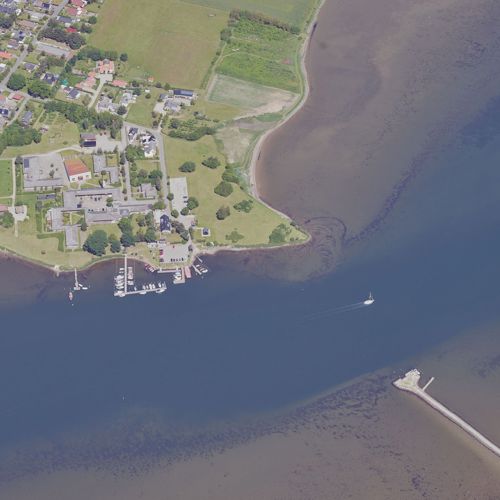When the coastline makes a dramatic turn and/or forms a kind of reef or isthmus, we call it a point. Similarly to a reef, points will often experience a more significant current, since the waters are here being pressed by. This yields great water circulation and is thus a good indicator of a sea trout spot. The water surrounding a point can be very deep, which means fishing for more species becomes an option, particularly during the warm months when the water temperature is high.
Formations of rocks, gravel, or sand created by current, wind, and weather form a compressed and lifted seabed, which provides fish with optimal conditions. There is often a huge water flow on these reefs. The depth is often greater on the sides of a reef, which means that the current will often be stronger there. Shoals of smaller fish roam in proximity to reefs in order to hunt, since the small food options are whirled around in the current. In their wake, the sea trout and other predatory fish follow. Reefs are useful spots year round, and they are optimal stops for sea trout when they migrate. Spending more time than usual on such a spot can easily be worth it.
This aquatic plant functions as a brilliant hiding place for the small food options, and simultaneously they oxidize the water around them, which provides small fish, shrimp, and sand hoppers with good living conditions. The eelgrass is also used as a resting place for the sea trout when it migrates along the coasts and particularly in late fall when the trout are headed for the river.
When mussels fix themselves to the seabed, it often occurs in places with current and good water flow, so nutrients and food options will come to them. Mussels are good indicators of life, and it’s often near them you’ll find hunting sea trout. Besides creating banks and reefs that provide other fish with conditions of life, the mussels also clean the water, and that has a huge impact on coastal water quality and fauna.
Along with the eelgrass, bladder wrack is the most prevalent aquatic plant along the Danish shores. This seaweed attaches itself to smooth surfaces such as rocks, gravel, and other variations on the bottom. The bladder wrack is a good hiding place for food options and fish. Bottom conditions with bladder wrack are good indicators of fish being nearby.
 Fishing spots
Fishing guide
Associations and water care
Information and rules
Explore Denmark
Fishing spots
Fishing guide
Associations and water care
Information and rules
Explore Denmark















